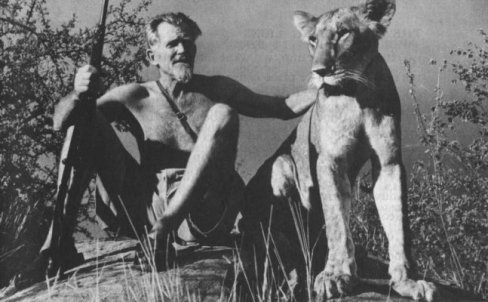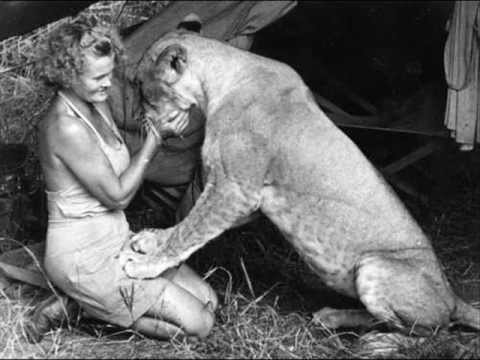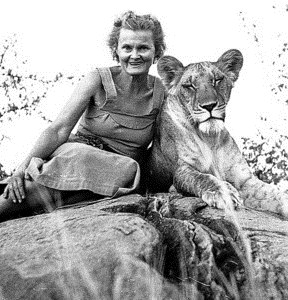Elsa the lioness
A TRAGIC DEATH RELEASES WILD EMOTIONS
Elsa the lioness
Elsa is synonymous with Joy & George Adamson who raised her from a cub and later re-introduced her back into the wild (see below). But it was the telling of that story in Born Free, and later the making of the movie of the same name. that made Elsa, and the Adamsons, household names.
Elsa the lioness (c. 28 January 1956 – 24 January 1961) was a female lion raised along with her sisters "Big One" and "Lustica" by game warden George Adamson and his wife Joy Adamson after they were orphaned at only a few weeks old. Though her two sisters eventually went to the Netherlands' Rotterdam Zoo, Elsa was trained by the Adamsons to survive on her own, and was eventually released into the wild.
Her story is told in several books by the Adamsons, as well as the 1966 motion picture Born Free which brought unprecidented attention to the plight of lions and African wildlife in general. The name 'Elsa' became a household name and a symbol of wild Africa.
Elsa and her sisters were orphaned on 1 February 1956 after George Adamson was forced to kill their mother when she charged him, in defence of her three cubs. George only later realised why the lioness had acted so aggressively towards him. George and his wife Joy then adopted the lioness’s four-day-old cubs.
While Elsa lived in many ways like a domesticated pet when she was small, Joy Adamson, whom Elsa trusted the most, considered her relationship with Elsa to be that of equals. Indeed, after sending the other two to a zoo, Joy was fiercely determined to give Elsa the education she needed to hunt and live in the wild. Her efforts paid off, earning Elsa worldwide fame at the time, when her early life’s story was published in the book Born Free. When Elsa was three years old, she brought three cubs of her own to show to the Adamsons, whom the Adamsons named “Jespah” (male), “Gop (male), and “Little Elsa” (female). The life of Elsa and her cubs is covered in the book Living Free, published not long afterwards.
Elsa died prematurely of a form of babesiosis, a tick-borne blood disease similar to malaria which often infects the cat family. Elsa’s grave is in the Meru National Park. She died as local sentiment had begun to turn against Elsa and her cubs, forcing the Adamsons to consider moving them. Elsa’s death made her cubs much more averse to human contact, even with the Adamsons themselves, complicating what would be their eventual capture and release in the Serengeti. The fate of the cubs upon their release was uncertain, though George Adamson was able to find Little Elsa, healthy and in the company of two other unrelated lions, during 19 months of subsequent searching. This was the last time that the Adamsons saw any of Elsa's cubs.
Courtesey: Wikipedia
Go back to: Families & Species Ambassadors
.jpg)



